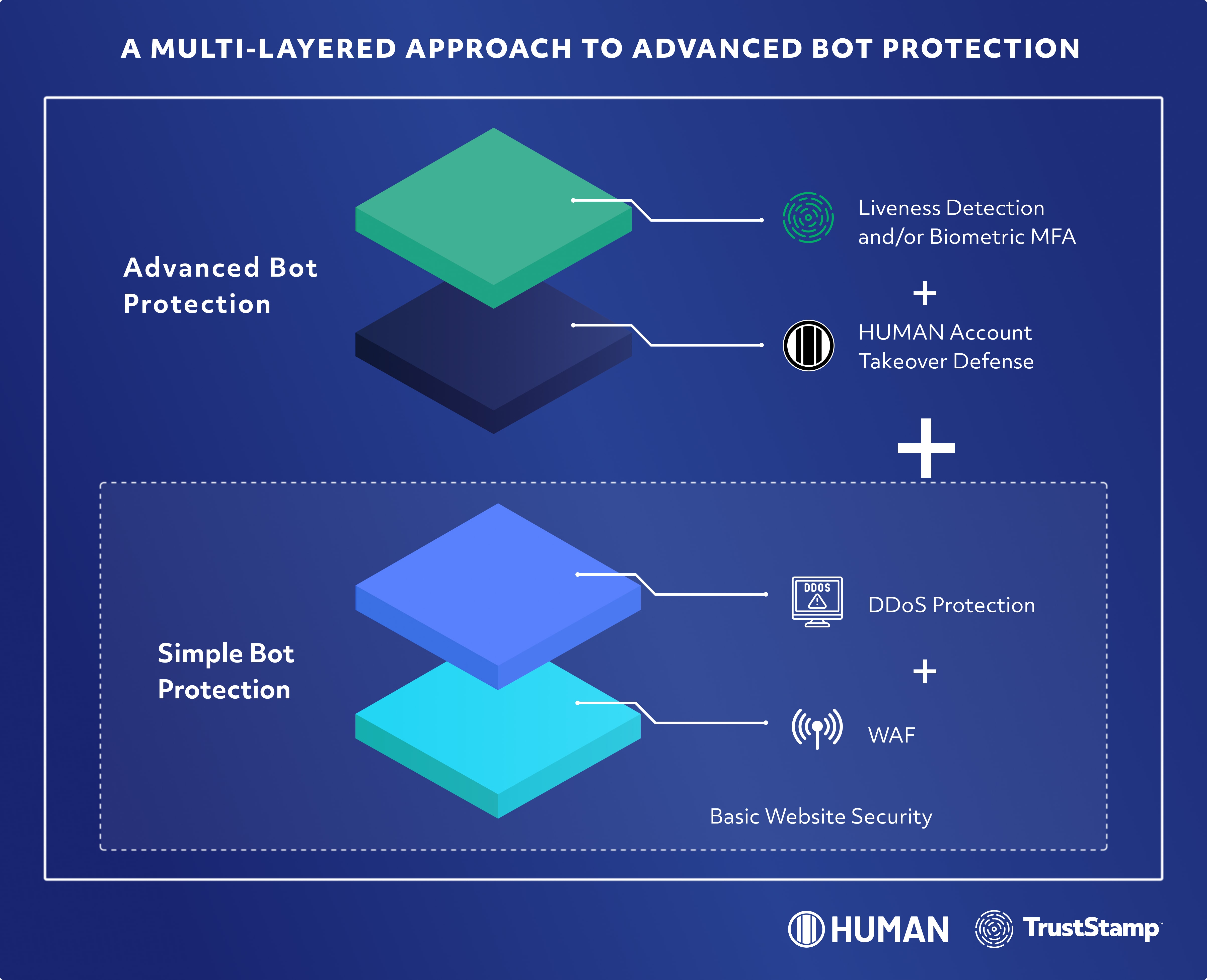Safeguarding Online Insurance From Account Abuse & Fraud: A Multi-Layered Approach
The increasing popularity of online insurance platforms, selling policies such as life, home, and car insurance, has revolutionized the insurance industry, making it more accessible and convenient for customers to purchase new policies and amend existing ones. However, this digital transformation has also attracted the attention of cybercriminals who deploy automated bots to test credentials, take over accounts, and commit fraud.
To combat these threats, insurance providers must implement a robust, multi-layered approach to protect clients and maintain the integrity of their online platforms. You can effectively safeguard online insurance applications from account abuse and fraud by using a single line of Javascript combined with a liveness test. Here’s how;
The Risks Posed by Bots in Online Insurance Applications
As online platforms become the preferred choice for purchasing insurance policies, the risk of account takeover or account fraud from bot-enabled attacks increases. These attacks can flood websites with fake applications, attempt to gain access to client accounts and steal sensitive customer data. Not only do these attacks compromise the security and privacy of legitimate users, but they also lead to financial losses and reputational damage for insurance providers.
Attackers have become more sophisticated in committing fraud and using bots and automation to closely mimic humans with increasing accuracy to bypass defenses. Although Web Application Firewalls (WAFs) and DDoS protection continue to be useful tools in combating simple and known bots, a layered approach including an advanced bot mitigation solution and biometric identity (such as Biometric Multi-Factor authentication) is far more effective in preventing sophisticated bots that attempt account abuse and fraud.
“It’s clear that bots are a pervasive threat,” said HUMAN CISO Gavin Reid, “It is extremely easy for bad actors to conduct malicious bot attacks and fraud with minimal effort or risk.”
Account Takeover attacks using credential stuffing provide attackers access to current customer details, leaving customers vulnerable to having their financial information stolen, account credentials sold to a fraud ring, or their loyalty points stolen.
Fake account creation can spam existing customers, scrape data from a website, and create fake quotes for sales teams to work on.
How can insurance companies protect themselves from the increased threat of this fraud and avoid financial and reputational losses?
“ATOs are poised to become the #1 cyberthreat. (2023 Cyberthreat Defense Report)”
The First Line of Defense Against Advanced Bots
In building a comprehensive defense against cyber threats and fraud, it’s vital to look beyond traditional security measures such as Web Application Firewalls (WAFs) and DDoS protection. It requires a multi-level approach that continuously protects your website and other digital assets from automated sophisticated bot attacks. However, it’s key to remember that protecting your digital assets should not come at the cost of poor user experience.
Behind the scenes, you can add a single line of javascript code, which will filter out automated bot traffic, leaving only genuine humans with genuine requests and login attempts. HUMAN’s Account Takeover Defense protects sites from sophisticated bots that closely mimic humans. It uses device, network and behavioral signals, and advanced machine learning techniques, predictive models, and security research to identify and stop bot attacks. Importantly, HUMAN’s Account Takeover Defense blocks bot-enabled attacks without user friction, preserving page load performance and reducing infrastructure costs.

Liveness Test: Ensuring Human Interaction through Selfies
You may wonder what happens with false positives or cases where it’s undetermined whether the traffic is a bot after the first line of defense? As AI capabilities expand exponentially, determining who is a human online has become and will increasingly become challenging. Therefore, protecting your digital assets requires a multi-layered approach. A multi-layered approach determines whether the person on your website or other digital assets is, in fact, a human, and for some use cases (e.g., insurance claims), whether it is the right human.
In cases where the first line of defense cannot determine the humanity of the user, a liveness test can challenge the user as an additional check. This test requires the applicant to take a selfie, which confirms a human presence during the application or quote process.
The liveness test incorporates algorithms that analyze the selfie for signs of liveness whilst ensuring the user is not attempting to tamper or spoof the selfie. This includes the protection against potential attackers’ use of masks, photos, or video replays, ensuring that the applicant is genuinely present and interacting with the platform.
A Comprehensive Solution for Protecting Online Insurance Applications
By combining advanced bot detection software with a liveness test, online insurance providers can effectively safeguard their platforms against the growing threat of bot attacks. This multi-layered approach not only ensures the authenticity of applicants but also helps maintain the overall security and integrity of the online application process.
As the digital landscape continues to evolve, online insurance providers must proactively invest in advanced security measures to protect their customers and businesses. The combination of bot detection software such as Account Takeover Defense and liveness tests offers a robust solution that can help prevent account takeover and account fraud using bot-based attacks and ensure a safe and secure online experience for all users.
Trust Stamp and HUMAN Security have collaborated by bringing together their proprietary technology to offer a comprehensive defense for online businesses against fraud and abuse while protecting privacy. This innovative collaboration offers a multi-layered approach, bolstering the security measures for the online insurance industry. Leveraging the strengths of both solutions ensures enhanced protection for online applications and safeguards client accounts, which maintains integrity and reduces costs for institutions.
Learn more about how a multi-layered approach can safeguard your business!

